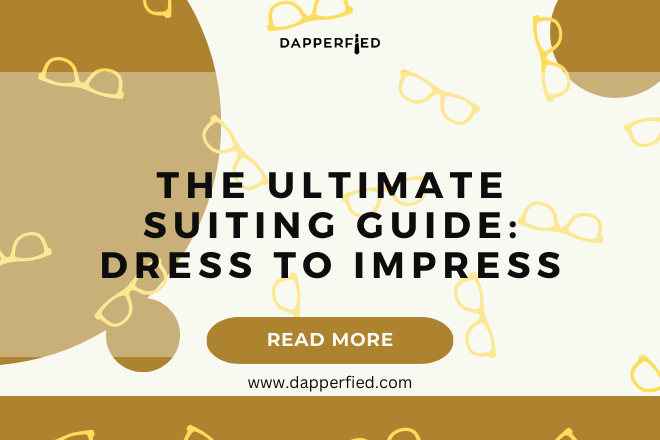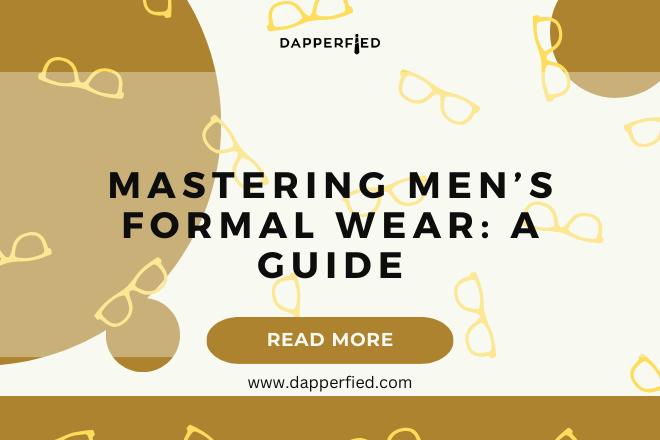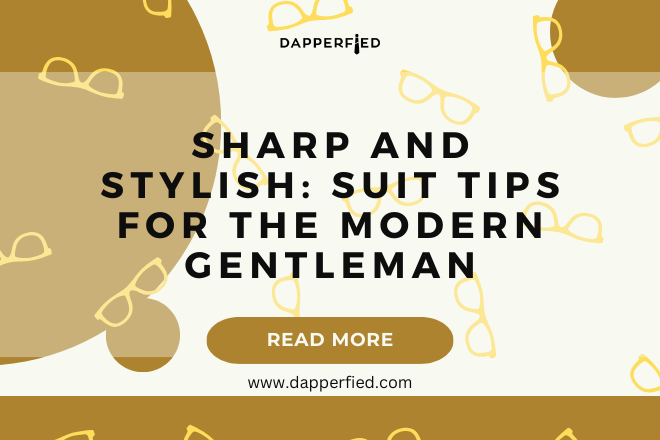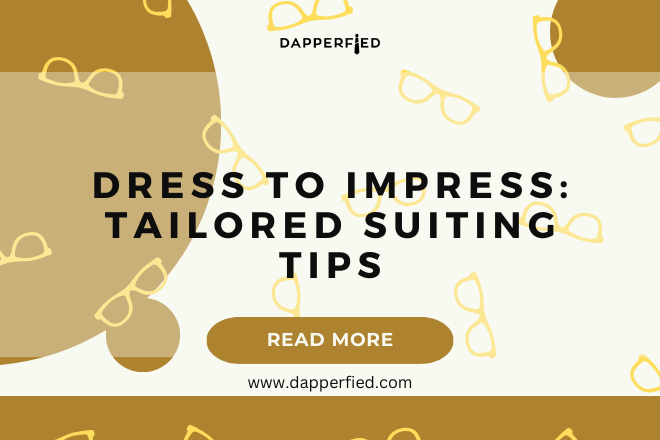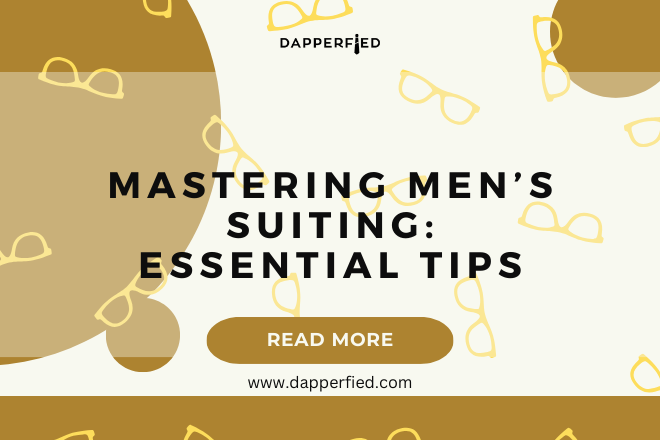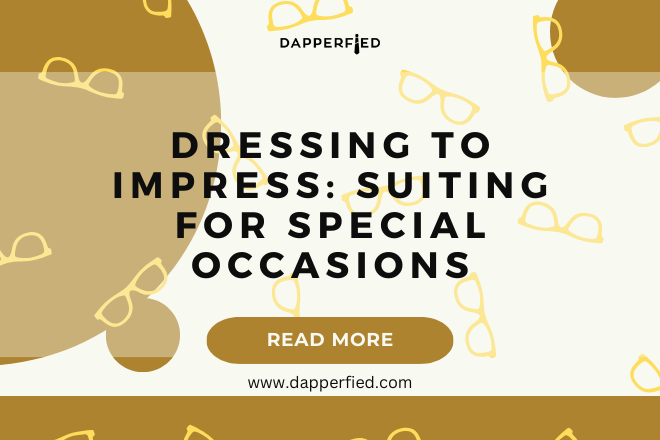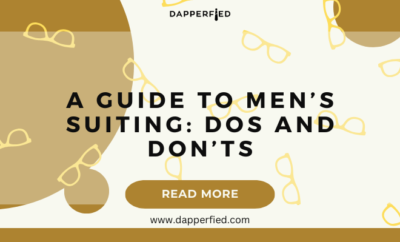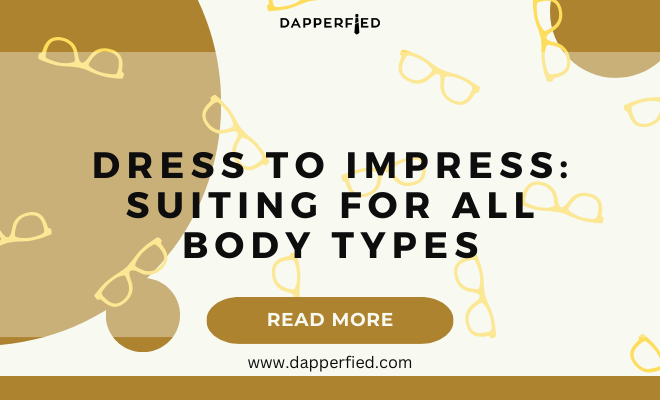
Men's Style
Dress to Impress: Suiting for All Body Types
First impressions matter, and a well-fitted suit can make all the difference. Whether it’s for a job interview, a wedding, or a night out, a suit can elevate your style game and leave a lasting impression. The right suit can make you feel confident, professional, and put-together. In this article, we will explore the different aspects of finding and wearing the perfect suit, from selecting the right fit for your body type to accessorizing and maintaining your suit for long-lasting wear.
Key Takeaways
- Finding the perfect suit for your body type is crucial for a flattering fit.
- Classic and modern cuts offer different styles for different occasions.
- Customizing your suit ensures a perfect fit and unique style.
- When purchasing a suit, look for quality materials and attention to detail.
- Proper care and storage of your suit will keep it looking sharp and lasting longer.
Suit Selection Tips: Finding the Perfect Suit for Your Body Type
Not all suits are created equal, and finding the right fit is crucial. The first step in selecting a suit is determining your body type. There are generally four body types: slim, athletic, average, and big and tall. Each body type has its own unique characteristics and requires different suit styles to flatter them.
For slim body types, a slim-fit suit is the way to go. These suits are tailored closer to the body and have narrower lapels and trousers. This style creates a sleek and modern look that complements a slim physique.
Athletic body types benefit from a tailored fit suit that accentuates their muscular build. Look for suits with slightly wider shoulders and tapered trousers to showcase your physique without being too tight.
Average body types have more flexibility when it comes to suit styles. A classic fit suit is a safe bet as it offers a timeless look that works well for most occasions. Avoid suits that are too loose or too tight, as they can make you appear larger or smaller than you actually are.
For big and tall body types, it’s important to find suits that are specifically designed for your proportions. Look for suits labeled as “big and tall” or “athletic fit” that offer extra room in the chest, waist, and shoulders. Avoid suits with wide lapels or baggy trousers, as they can make you appear larger.
Men’s Suiting Styles: Classic vs. Modern Cuts
When it comes to suit styles, there are two main categories: classic and modern cuts. Classic suits are timeless and have been worn for decades. They feature a more traditional silhouette with wider lapels, a longer jacket length, and looser-fitting trousers. Classic suits are versatile and appropriate for most occasions, from weddings to business meetings.
On the other hand, modern cuts offer a fresh take on traditional styles. These suits have narrower lapels, shorter jacket lengths, and slimmer-fitting trousers. Modern cuts are more fashion-forward and can give you a sleek and stylish look. They are perfect for those who want to make a statement and stand out from the crowd.
When choosing between classic and modern cuts, consider the occasion and your personal style. Classic suits are a safe choice for formal events or conservative work environments, while modern cuts are better suited for fashion-forward individuals or less formal occasions.
Tailored Suit Guide: Customizing Your Suit for a Perfect Fit
| Measurement | Ideal Measurement (inches) | Your Measurement (inches) |
|---|---|---|
| Chest | 36-38 | 40 |
| Waist | 30-32 | 34 |
| Hip | 36-38 | 42 |
| Shoulder | 17-18 | 19 |
| Sleeve Length | 32-33 | 34 |
| Pant Length | 30-32 | 34 |
| Thigh | 22-24 | 26 |
| Inseam | 30-32 | 34 |
Off-the-rack suits may not fit perfectly, but tailoring can make all the difference. A well-tailored suit can transform your appearance and make you look sharp and put-together. When purchasing a suit, it’s important to find a good tailor who can make the necessary alterations to ensure a perfect fit.
Some common alterations that may be needed include shortening or lengthening the sleeves, taking in or letting out the waist of the trousers, and adjusting the jacket length or shoulder width. A skilled tailor will be able to assess your body type and make the necessary adjustments to create a suit that fits you like a glove.
When getting your suit tailored, it’s important to communicate your preferences clearly. Discuss any specific fit issues you have or any style preferences you want to incorporate. A good tailor will listen to your needs and provide expert advice on how to achieve the best fit and style for your body type.
Suit Buying Tips: What to Look for When Purchasing a Suit
When buying a suit, there are several factors to consider. The first is the fabric. Wool is the most common fabric used for suits and offers a balance of comfort, durability, and breathability. Cotton suits are lightweight and perfect for warmer climates, while synthetic fabrics like polyester are more affordable but may not offer the same level of quality.
Next, consider the suit’s construction. Look for suits with fully canvassed or half-canvassed jackets, as these offer better drape and durability compared to fused jackets. Pay attention to the details such as the stitching, buttons, and lining, as these can indicate the overall quality of the suit.
Fit is also crucial when buying a suit. Try on different sizes and styles to find the one that flatters your body type the most. Pay attention to how the suit feels when you move and sit down, as comfort is just as important as style.

Lastly, consider your budget. Suits can range in price from affordable options to high-end luxury brands. Set a budget that works for you and prioritize quality over quantity. A well-made suit may cost more upfront but will last longer and provide better value in the long run.
Men’s Formal Wear: Dressing for Black Tie Events

Black tie events require a specific dress code, and a regular suit may not always cut it. For formal occasions, such as weddings or galas, it’s important to dress appropriately in a tuxedo or formal suit.
A tuxedo typically consists of a black or midnight blue jacket with satin lapels, matching trousers with a satin stripe down the sides, a white dress shirt with French cuffs, a black bow tie, and black patent leather shoes. Accessories such as cufflinks, a pocket square, and a cummerbund or waistcoat can add a touch of elegance to your ensemble.
If you don’t own a tuxedo, you can opt for a formal suit in a dark color such as black or charcoal gray. Pair it with a white dress shirt, a black bow tie, and polished black shoes. While not as formal as a tuxedo, a well-fitted formal suit can still make you look sharp and sophisticated.
Choosing the Right Fabric: Wool, Cotton, or Synthetic?
The fabric of your suit plays a significant role in its overall look and feel. There are several options to choose from, each with its own benefits and drawbacks.
Wool is the most common fabric used for suits and is known for its durability, breathability, and natural drape. It is available in various weights and weaves, making it suitable for different climates and occasions. Wool suits are versatile and can be worn year-round.
Cotton suits are lightweight and perfect for warmer climates or casual occasions. They offer excellent breathability and are comfortable to wear. However, cotton suits tend to wrinkle easily and may require more maintenance compared to wool suits.
Synthetic fabrics like polyester are more affordable but may not offer the same level of quality as natural fibers. They are often used in budget-friendly suits or for specific purposes such as travel suits that are wrinkle-resistant. While synthetic suits may not have the same luxurious feel as wool or cotton, they can still be a practical option for those on a tight budget.
When choosing the right fabric for your suit, consider the occasion, climate, and personal preferences. If you’re unsure, opt for a wool suit as it is a safe choice that works well in most situations.

Accessorizing Your Suit: Ties, Pocket Squares, and Cufflinks
Accessories can take your suit from basic to stylish. When it comes to accessorizing, there are a few key items to consider: ties, pocket squares, and cufflinks.
Ties come in various styles, colors, and patterns, allowing you to express your personal style. For a classic and versatile look, opt for a silk tie in a solid color or subtle pattern. If you want to make a statement, choose a bold pattern or color that complements your suit.
Pocket squares add a touch of elegance and sophistication to your suit. They can be folded in various ways, such as the classic square fold or the more casual puff fold. Choose a pocket square that complements your tie or shirt, either by matching or contrasting colors.
Cufflinks are small accessories that fasten the cuffs of your dress shirt. They come in various styles and materials, from simple silver or gold designs to more elaborate gemstone or engraved options. Choose cufflinks that match your personal style and the formality of the occasion.
When accessorizing your suit, it’s important to strike a balance. Avoid overdoing it with too many accessories or clashing patterns. Instead, choose accessories that complement each other and enhance your overall look.
Maintaining Your Suit: Tips for Proper Care and Storage
A well-maintained suit can last for years, but neglect can lead to damage and wear. To keep your suit looking sharp and in good condition, follow these tips for proper care and storage:
– Dry clean sparingly: Dry cleaning can be harsh on fabrics and may cause them to lose their shape or fade over time. Only dry clean your suit when necessary, such as when it’s stained or has an odor. For regular maintenance, spot clean any stains and air out your suit after wearing it.
– Invest in a good suit brush: A suit brush is an essential tool for removing dust, lint, and surface dirt from your suit. Brush your suit regularly to keep it looking clean and fresh. Use gentle strokes and brush in the direction of the fabric’s grain to avoid damaging the fibers.
– Hang your suit properly: Invest in good quality wooden or padded hangers to hang your suit. Avoid wire hangers, as they can distort the shape of your suit. Hang your suit in a well-ventilated area to allow it to breathe and avoid musty odors.
– Rotate your suits: Wearing the same suit every day can cause it to wear out quickly. Rotate your suits regularly to give them time to rest and recover. This will help maintain their shape and prolong their lifespan.
– Store your suit in a garment bag: When not in use, store your suit in a breathable garment bag to protect it from dust, moths, and other potential damage. Avoid storing your suit in plastic bags, as they can trap moisture and cause mildew.
By following these care and storage tips, you can ensure that your suit stays in excellent condition for years to come.
Looking Sharp and Confident in Any Suit
A suit can be a powerful tool for looking and feeling your best. With the right fit, style, and care, you can rock any suit with confidence. Whether it’s for a formal event or a casual outing, a well-fitted suit can elevate your style game and leave a lasting impression. Take the time to find the perfect suit for your body type, customize it for a flawless fit, and accessorize it to reflect your personal style. With proper care and maintenance, your suit will continue to make you look sharp and confident for years to come.
If you’re looking for the perfect pair of shoes to complement your suit, look no further than the Cole Haan Men’s Lenox Hill Casual Wingtip. This stylish and versatile shoe is a great choice for any body type, adding a touch of sophistication to your ensemble. Whether you’re attending a formal event or simply want to elevate your everyday look, these wingtip shoes are a must-have. Pair them with a tailored suit for a classic and polished appearance. For more tips on suiting for different body types, check out this article on Dapperfied: https://www.dapperfied.com/cole-haan-mens-lenox-hill-casual-wingtip/.
FAQs
What is Suiting for Body Types?
Suiting for Body Types is the practice of selecting and wearing suits that complement your body shape and size.
Why is Suiting for Body Types important?
Suiting for Body Types is important because it helps you look and feel confident in your clothing. Wearing a suit that fits well and flatters your body shape can enhance your appearance and make you feel more comfortable.
What are the different body types?
The different body types are apple, pear, hourglass, rectangle, and inverted triangle. Apple-shaped bodies have a larger upper body and narrower hips, while pear-shaped bodies have a larger lower body and narrower shoulders. Hourglass-shaped bodies have a balanced upper and lower body with a defined waist. Rectangle-shaped bodies have a straighter silhouette with little definition at the waist. Inverted triangle-shaped bodies have broader shoulders and a narrower waist and hips.
How do I determine my body type?
To determine your body type, measure your shoulders, bust, waist, and hips. Then, compare the measurements to each other to see which body type you fall under. You can also look at your body shape in a mirror and compare it to the descriptions of the different body types.
What kind of suits are best for apple-shaped bodies?
Apple-shaped bodies should look for suits that draw attention away from the midsection and towards the legs and arms. A single-breasted suit with a low button stance and a longer jacket length can help elongate the torso. Darker colors and vertical stripes can also help create a slimming effect.
What kind of suits are best for pear-shaped bodies?
Pear-shaped bodies should look for suits that balance out the upper and lower body. A suit with a fitted jacket and flared pants can help create a more balanced silhouette. Lighter colors and patterns on the upper body can also help draw attention upwards.
What kind of suits are best for hourglass-shaped bodies?
Hourglass-shaped bodies should look for suits that accentuate the waist and curves. A fitted jacket with a nipped-in waist and a pencil skirt or straight-leg pants can help showcase the curves. Bold colors and patterns can also help draw attention to the waist.
What kind of suits are best for rectangle-shaped bodies?
Rectangle-shaped bodies should look for suits that create the illusion of curves. A double-breasted suit with a defined waist and flared pants can help create a more hourglass-like silhouette. Bold colors and patterns can also help add dimension to the body.
What kind of suits are best for inverted triangle-shaped bodies?
Inverted triangle-shaped bodies should look for suits that balance out the upper and lower body. A suit with a fitted jacket and straight-leg pants can help create a more balanced silhouette. Lighter colors and patterns on the lower body can also help draw attention downwards.

